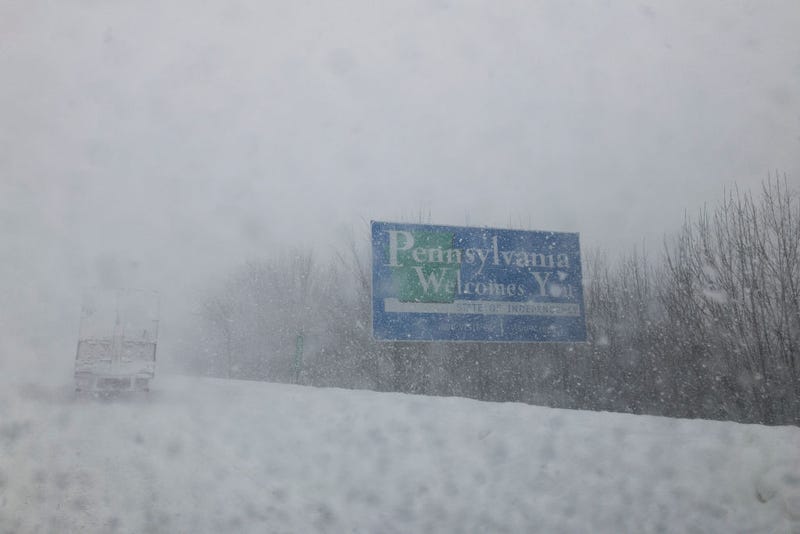
PHILADELPHIA (KYW Newsradio) — PennDOT crews are ready for the first big storm of the season.
"It'll be all hands on deck," PennDOT’s Brad Rudolph said of preparations for the coming nor'easter. "We'll be using all of our state trucks — about 182 in the five-county region. And then we have about 257 contractor trucks that we'll call in across the region as well to deal with the storm."
Ahead of its arrival, crews are spreading a salt-brine mix to slow the rate at which the snow sticks, once the storm starts.
"Pre-treating major expressways with salt brine helps with some of the initial bonding to the roadway and some of the early melting to help our trucks as the storm progresses," Rudolph said.
Once the first flakes really start to fly, he said, salt trucks will hit the highways pretty quickly.
"It will be a spreading event until that snow starts to accumulate, and then we’ll drop the blades and begin plowing across the region," Rudolph said. "We expect this to be a sizeable storm."
As far as salt supplies go, he said there’s plenty of it on hand to cover the five-county Philadelphia region.
"We’re well stocked up on salt in the region due to a light winter last year, where we only used about 17,000 tons," Rudolph said. "We got about 130,000-plus tons stockpiled across the region."
He said if you do have to travel during the storm, give the road crews a lot of room.
"These guys have computers that are monitoring spreading, they got a big blade, they got to monitor traffic," Rudolph explained. "These are giant trucks they’re operating. So, the more space you can give them, the better."
He said it’s never a good idea to pass a salt or plow truck.
But if you must drive in the storm, Jana Tidwell, manager of public and government affairs for AAA Mid-Atlantic, said to make sure the gas tank is full.
“A 10-minute run to the convenience store could turn into a couple hours depending on road conditions,” she said. “They deteriorate rather quickly. And, let’s be honest — we haven’t seen a snowstorm like this since March of 2019. So we’re all, quite frankly, out of practice.
“Give yourself more than enough time to get where you have to go. You want to slow it down. Increase your following distance between you and the car in front of you, the cars next to you on the roadways.”
And, Tidwell said, be sure to pack the car with storm essentials.
“The jumper cables, ice scraper, snow brush, some rock salt or kitty litter to get some traction underneath your tires if you get stuck, a portable shovel,” she said. “You want to make sure if you happen to be in a parking lot or driveway where you’ve been plowed in that you can get your vehicle out.”
Vaccine shipments carry on
Gov. Tom Wolf said the best way to help crews keep the roads passable is to stay off those roads, if you can.
He said not only do essential workers, like health care providers and first responders, need to be able to get through, but they also want to make sure the tens of thousands of doses of vaccine can get through as well.
Philadelphia started immunizing health care workers at Einstein Medical Center and Temple University Hospital Wednesday morning.
Pennsylvania Emergency Management Agency (PEMA) Director Randy Padfield said Operation Warp Speed, the federal program handling the vaccine, has contingency plans for things like bad weather.
“They have the ability to hold the shipment if it’s unsafe to be able to travel. However, we have the ability at the Commonwealth Response Coordination Center to be able to also route them the best way to be able to get to their destination,” Padfield said.
The coordinated response includes PEMA, Pennsylvania State Police, PennDOT and the Turnpike Commission.
Padfield said while the Pfizer vaccine needs to be kept around minus 100 degrees Fahrenheit, its packaging is designed to keep it cold for five days, and the packaging can be “recharged” with dry ice, if needed.
Overall, Rudolph advised winter drivers to be patient and exercise caution.


